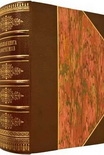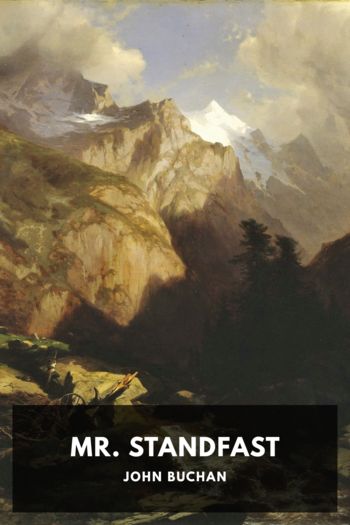Coconut Chaos, Diana Souhami [leveled readers TXT] 📗

- Author: Diana Souhami
Book online «Coconut Chaos, Diana Souhami [leveled readers TXT] 📗». Author Diana Souhami
The intention of Culture Day was plain. I used the wand as a pointer to show the children where Juan Fernandez was on the map of the world and its position in relation to their own island. I explained how a Scottish mariner called Alexander Selkirk came to be marooned there more than two hundred years ago, after a row with the captain of his ship, how he was alone for four years before a ship of rescue came, how at first he was depressed, but then he worked to survive, how a writer called Daniel Defoe then wrote a book called Robinson Crusoe inspired by Selkirk’s experiences …
The children were perhaps more interested in Juan Fernandez than in the bubbling chips. I put the truth wand down and asked the smallest boy, the four-year-old, what ten things he’d take with him if such a marooning happened to him. He said he’d take his toys and his teddy bear, but then he became coolly practical. He was an island boy, a survivor. He’d take a tent, a cooking pot, a sleeping bag, a knife, wire and hooks for fishing, matches, boots, a hammer, his cat called JJ to catch the rats. The other children took up the theme, the wand forgotten. Raymond said he’d take a gun, various tools for boatbuilding, and his guitar. Pania said she couldn’t survive without her collection of rock music.
‘You’d want to take a notebook wouldn’t you?’ Barbara said to me, ‘so that you could write about your experiences and sell the serial rights for megabucks.’ Was I going to write about Pitcairn? Wanda, the other social worker, asked. I said I didn’t know. Maybe. But I wasn’t quite sure how.
The manioc chips were drained and there was a desultory picking at them. They tasted of potato. ‘I’ve been rumbled,’ I said to Lady Myre as we walked back to Rosie’s house.
She was thrilled. ‘It’s wonderful,’ she said. ‘They’re bound to get us off the island now. I knew you’d be my saviour.’
Wayne was waiting. He looked official. Was I a writer? he asked.
‘You could find out from the internet,’ I told him. He’d checked. I’d written about Selkirk’s island and sundry women of whom he hadn’t heard. ‘Are you going to write about the trials?’ he asked. ‘Are you going to sell your story to the papers?’
I said I wasn’t a journalist. I didn’t know how to talk to him about chaos theory and Christian’s coconut, and Rosie’s blouse, and Lady Myre, and my own loss of certainties. He seemed too directional.
He told me he wanted me off the island. He feared either I or Lady Myre might get shot. He’d made further enquiries about ships. The Buzzard Bay would call on 30 September, bound for Panama. Two cruise ships, the Princess and the Emerald, might be persuaded to divert on their way to Easter Island.
‘Hooray,’ Lady Myre said, then talked of Sir Roland’s connections. I said Panama wasn’t convenient and that I’d rather Auckland or Tahiti.
Such suspicion made me feel guilty. It was feared I’d quiz little children and the frail elderly for revelations of a sexual sort. ‘Perhaps there’s room in the prison for me too,’ I joked.
When he left, the atmosphere was strained. I’d been less than candid but nothing about the place invited candour. I thought again of all the things the island didn’t have: a hotel, cafe or bar, classes in anything useful, a cinema or theatre, and of how destructive and undermining for everyone these trials seemed to be.
We splashed to church in wellingtons with a change of shoes in bags. Rosie wore the Fenwicks blouse. She hoicked at it, wanting to make it respectable. I wore my better Rohan waistcoat and drawstring trousers. Lady Myre started out in white, with a silver sequined shawl.
The Bounty Bible had a notice beside it saying it must not be photographed: photos could be bought at the museum. There were a dozen varnished wooden benches, a table with a lace cloth and a vase of sparse flowers, a painting of a Pitcairn cliff face with palm trees, the pounding surf, and THE LORD IS MY ROCK AND MY SALVATION in capitals in the sky. Edward Young’s great-great-great-granddaughter sat at the simplest of electric organs, there were two speakers fixed to the wall, there was a reckoner of the day’s hymns: 127, 378, 130.
The congregation was small: all the visitors and six islanders. Hank began by thanking God for the day and for bringing Lady Myre and me safely to the island, then pondered the divine motive for making it impossible to unload the supplies. The prison’s perimeter fence was now in Antwerp and it would cost £100,000 for a ship to bring it back to Pitcairn.
We sang the first hymn, ‘Guide Me, O Thou Great Jehovah’. The first verse was delivered in near unison ordinarily enough:
Guide me, o thou Great Jehovah,
Pilgrim through this barren land;
I am weak, but thou art mighty;
Hold me with thy powerful hand.
Then came the refrain and Lady Myre took off. The mood focused. Other thoughts were impossible. Had it been the Shaw Savill Line neighbouring ships might have turned course in wonder:
Bread of heaven, bread of heaven,
Feed me till I want no more;
Feed me till I want no more.
Suzanne couldn’t match her, there weren’t enough stops on her organ. Into Lady Myre’s singing went the passion of her plight and the force of her voice was extraordinary.
Hank’s sermon was about the dire consequences that awaited those who disobeyed the strictures of the Sabbath. He was a handsome man with characteristic Polynesian features, though his frame was tall and slight: olive skin, dark hair and eyes, flat nose. God had punished his daughter with appendicitis after she took a Sabbath swim at St Paul’s Point; his father had loaded his boat on a Saturday morning and the goat had three kids that died; his mother made a fish stew, so the well burst and





Comments (0)